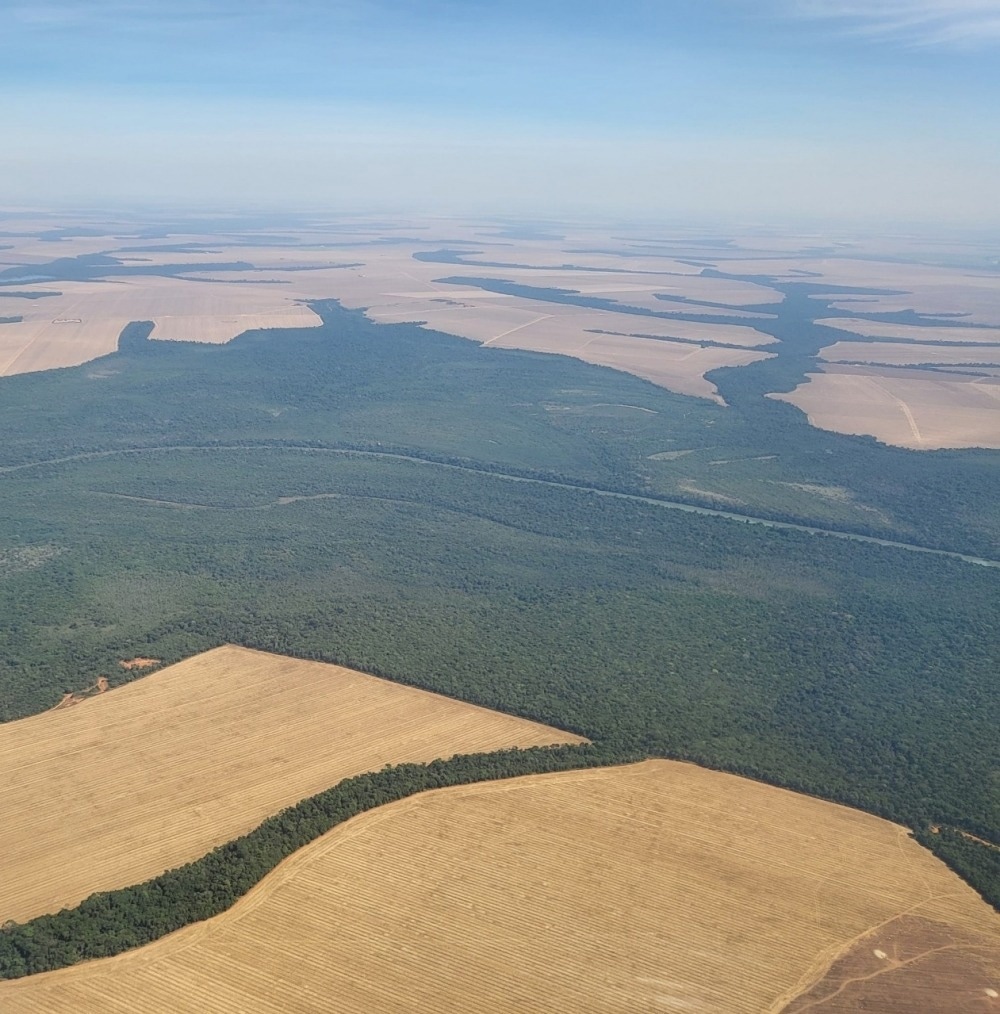According to recent research published in the journal Nature Ecology & Evolution, the number of active fires documented in the Brazilian Amazon in August – September 2022 was the greatest since 2010. Aside from the record number of fires (74,398), the scientists discovered they were caused by recent human deforestation rather than extreme drought, as in 2010.
 A Brazilian study identified more than 74,000 active fires in the period. They were not mainly due to extreme drought, the foremost cause of the spate of forest fires seen in 2010. Half of Amazon is typically vulnerable to fire in the two-month period analyzed. Human action was the main cause of the recent destruction. Image Credit: Gabriel de Oliveira/University of South Alabama.
A Brazilian study identified more than 74,000 active fires in the period. They were not mainly due to extreme drought, the foremost cause of the spate of forest fires seen in 2010. Half of Amazon is typically vulnerable to fire in the two-month period analyzed. Human action was the main cause of the recent destruction. Image Credit: Gabriel de Oliveira/University of South Alabama.
“The idea of publishing our findings came up when we analyzed data provided free of charge by the Queimadas program,” states Guilherme Mataveli, the first author of the study.
“Queimadas” means burnings in Portuguese, and Mataveli was referring to the National Space Research Institute’s (INPE) forest fire monitoring service. Mataveli is a postdoctoral researcher in INPE’s Earth Observation and Geoinformatics Division and has a scholarship from FAPESP.
Every year, the number of fires increases in August and September, when the weather favors fire in roughly half of the Amazon.
But the surge in the number of fires in 2010 was due to an extreme drought event that occurred in a large part of the region, whereas nothing similar occurred in 2022, so other factors must have been to blame.
Guilherme Mataveli, Postdoctoral Researcher, Earth Observation and Geoinformatics Division, National Space Research Institute
Mataveli’s primary research interest is the effect of land use and land cover on fine particulate matter emissions from fire in the Amazon and Cerrado biomes, which he explores using remote sensing and modeling.
The investigators also used data from another INPE platform, TerraBrasilis, to analyze the areas of the identified fires. According to the deforestation alerts issued by INPE’s real-time detection system (DETER), 62% took place in recently deforested areas; the number of fires in lately deforested areas accelerated by 71% in August–September 2022 compared to the same period in 2021; and the total deforested area increased by 64%.
Alarming results also emerged from our analysis of the type of land on which these fires occurred, classified into public land, smallholdings, and medium to large private properties.
Guilherme Mataveli, Postdoctoral Researcher, Earth Observation and Geoinformatics Division, National Space Research Institute
Over one-third (35%) of the fires identified in August–September 2022 took place in public areas like conservation units and Indigenous reservations, with the number of fires in these areas increasing 69% year on year.
“The Amazon has become more vulnerable to grilagem [land grabbing via falsification of title deeds] in recent years, and this sharp increase is one of the results of this process,” he added.
TerraBrasilis was a major source of information for this land use and land cover evaluation, with most of its data coming from the Rural Environmental Register (CAR), which is intended to ensure compliance with the Forest Code.
The CAR requires all landowners and land users to register. The procedure is essentially self-declaratory, with the landowner providing environmental data about the property. Conservation units, Indigenous reservations, and other types of public land do not need to be registered with the CAR.
Climate Goals
The spread of fire, degradation, deforestation, and illegal mining in the Amazon contradicts international objectives set by Brazil as part of its commitment to fight global warming, like halting all unapproved deforestation by 2028 and accomplishing a 50% reduction in greenhouse gas emissions by 2030 compared to 2005 levels.
Apart from the negative impact on biodiversity and the preservation of ecosystem services important to human life, like climate regulation, unregulated deforestation, and associated activities endanger the Brazilian economy.
Commodity export markets, like the European Union, are endorsing new regulatory standards that will prohibit the purchase of goods manufactured in deforested or degraded areas.
The article highlights a systemic problem that must be seriously addressed by society. A reversal of this trend requires punishment of those who break the law, implementation of efficient public policies, communication with society, and a search for alternative solutions based on cutting-edge science and capable of promoting sustainable development in the region.
Luiz Aragão, Study Last Author, National Institute for Space Research
Luiz Aragão concludes, “Identifying and prosecuting the people who are illicitly destroying the world’s largest tropical forest is one of the challenging tasks on the environmental agenda to be faced by the incoming federal government.”
Luciana Vanni Gatti and Nathália Carvalho, both researchers at INPE; Liana Oighenstein Anderson at the National Centre for Monitoring and Early Warnings of Natural Disasters (CEMADEN); Gabriel de Oliveira at the University of South Alabama (USA) also carried out the research.
Other authors who participated in the study include Celso H. L. Silva-Junior at the University of California Los Angeles (UCLA) and California Institute of Technology (Caltech) in the United States, and the Federal University of Maranhão in Brazil; and Scott C. Stark at Michigan State University (MSU).
Aragão, Anderson, and Gatti received funding from the FAPESP.
Journal Reference:
Mataveli, G., et al. (2022) Record-breaking fires in the Brazilian Amazon associated with uncontrolled deforestation. Nature Ecology & Evolution. doi.org/10.1038/s41559-022-01945-2